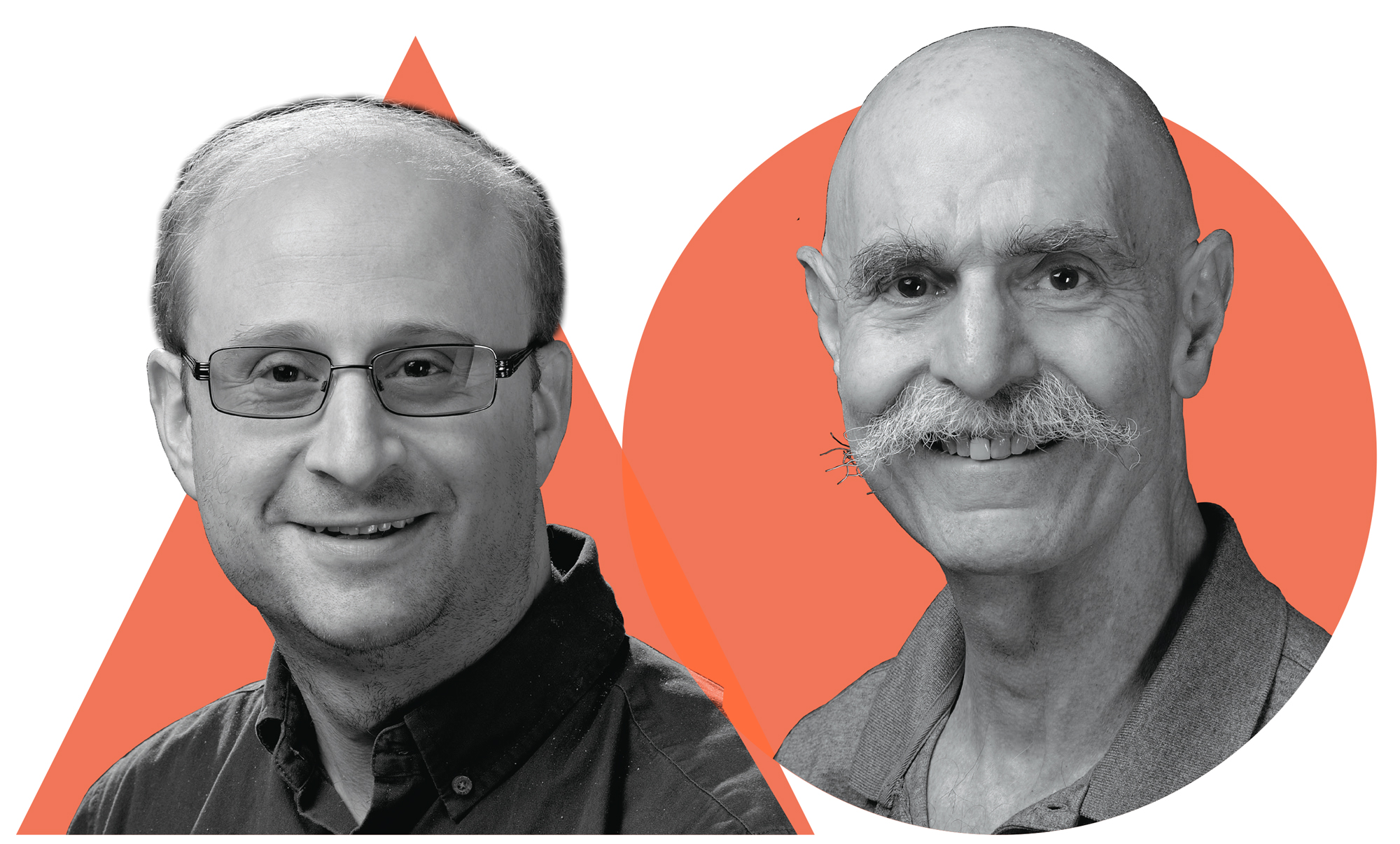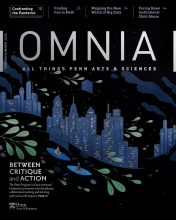Omnia 101: Truth, Math, and Philosophy
Henry Towsner, Associate Professor of Mathematics, and Scott Weinstein, Professor of Philosophy, discuss the complex intersection of theory and proof.

Omnia 101 offers readers a peek into what faculty do every day in their classrooms, and how they bring their expertise to the next generation.
What is truth? How do we decide if a theoretical idea that we cannot measure or examine is correct? These are issues that mean something to people in their everyday lives, and to scholars in their everyday work. We spoke with Henry Towsner, Associate Professor of Mathematics, and Scott Weinstein, Professor of Philosophy, to examine the centuries-long evolution of human understanding in regard to these two disciplines and the search for truth.

Henry Towsner (left), Associate Professor of Mathematics, and Scott Weinstein, Professor of Philosophy
On the most basic level, how is proof generally defined or understood in mathematics?
Henry Towsner: Mathematicians have an official answer to what proof is: It’s a list of formal mathematical formulas where each is deduced by the rules of logic from previous steps, or from the “axioms”—our basic, agreed-upon assumptions. We want the notion of proof to be something that’s completely objective. We might disagree about whether some axioms are true (or useful, or beautiful), but there’s not supposed to be any room for disagreement or mistakes about whether a proof from those axioms is valid.
But we don’t actually live up to that ideal, because we also want proofs to be about ideas—about presenting the explanation of why something should be true. Mathematicians find long lists of formulas as boring and unintuitive as everyone else, so real proofs—the way actual human mathematicians write them—are arguments written in ordinary (though very jargon-filled) English. They need to be clear and exact enough to persuade other experts.
How did mathematical proof influence philosophy?
Scott Weinstein: The Pythagorean theorem that the diagonal of a square is incommensurable with its side had a profound influence on the development of Western philosophy. Plato recognized that this could not have been established, nor even suggested, by empirical means such as measurement, but was rather a remarkable result that could only be achieved through the exercise of reason alone. The impact this insight had on Plato’s thought reverberates through the history of philosophy in the celebration of the primacy of reason over other cognitive capacities.
When is an argument sufficiently convincing, whether it’s math or philosophy?
Towsner: The challenge is introducing a language that is precise enough that people can say what they mean and make their arguments clearly enough so that we can check if they’re foolproof. I think philosophers of all stripes would be very happy if they could say everything in a language that absolutely could not be misunderstood. In this sense, philosophy can be much harder than math, because it’s often more difficult to have that level of precision.
But there are exceptions where mathematics can be similarly imprecise. There’s an example from the early 1800s that’s notorious. One of the founders of analysis, Augustin-Louis Cauchy, gave a proof of a result, and then, several decades later, people realized the result wasn’t true. Then, more recently, people have gone back and argued that perhaps Cauchy’s proof was totally correct and people just misunderstood what his result was. Either way, it’s a serious problem if we can’t agree on when a proof is correct, or even what we’re trying to prove. The development of modern analysis and logic was heavily driven by the response to this.
How did the idea of mathematical rigor evolve?
Weinstein: There had been standards of transparency of proof, but that began to break down as mathematics developed in the 19th century. It became much harder to see mathematical arguments directly in the intuitive geometrical sense that mathematicians and philosophers had treasured from antiquity through the 18th century. In the wake of what was referred to as “the crisis in the foundations of mathematics,” mathematicians and philosophers intensively pursued investigations into the logical foundations of mathematics. These investigations led to the formalization of mathematical proof that Henry just described, and to a determination of the scope and limits of the mechanization of mathematical reasoning. Crucial to this development was mathematician and computer scientist Alan Turing’s mathematical characterization of mechanical computation in terms of simple devices, now known as Turing machines, which laid the scientific foundations for the revolution in computer and information technology that began in the last half of the 20th century and continues today.
What happens when even experts can’t agree on whether an argument is convincing?
Towsner: A few years ago, a proof was announced of something called the ABC conjecture, which had this very unusual feature that a lot of people were interested in it, but mathematicians couldn’t tell if it was correct. Some of my colleagues went to conferences where people would present parts of this proof and discuss whether it was correct, and it took years to reach a consensus that there were some errors. But that’s a new idea that you could have something that is so complicated that it’s kind of beyond what we can make rigorous right now.
How do you deal with this new wave of proofs?
Weinstein: The project of checking the validity of very complex proofs is similar to computer scientists’ efforts directed at checking the correctness of programs. For example, with security software, you need to check that a certain kind of protocol can’t be broken. Our colleague, Andre Scedrov, Professor of Mathematics and Chair of the Math Department, has applied logical techniques to this problem with considerable success. Nonetheless, as is apparent from recent dramatic events—such as the software failures that occurred during the Iowa Democratic caucuses this past February—even though we’ve worked very hard on verifying the correctness of safety-critical software systems like flight controllers, and on guaranteeing the reliability and security of software for elections, we’re still not there yet. In general, the issues of proof-checking and software verification continue to present extremely challenging mathematical problems that will occupy researchers in logic for many years to come.



